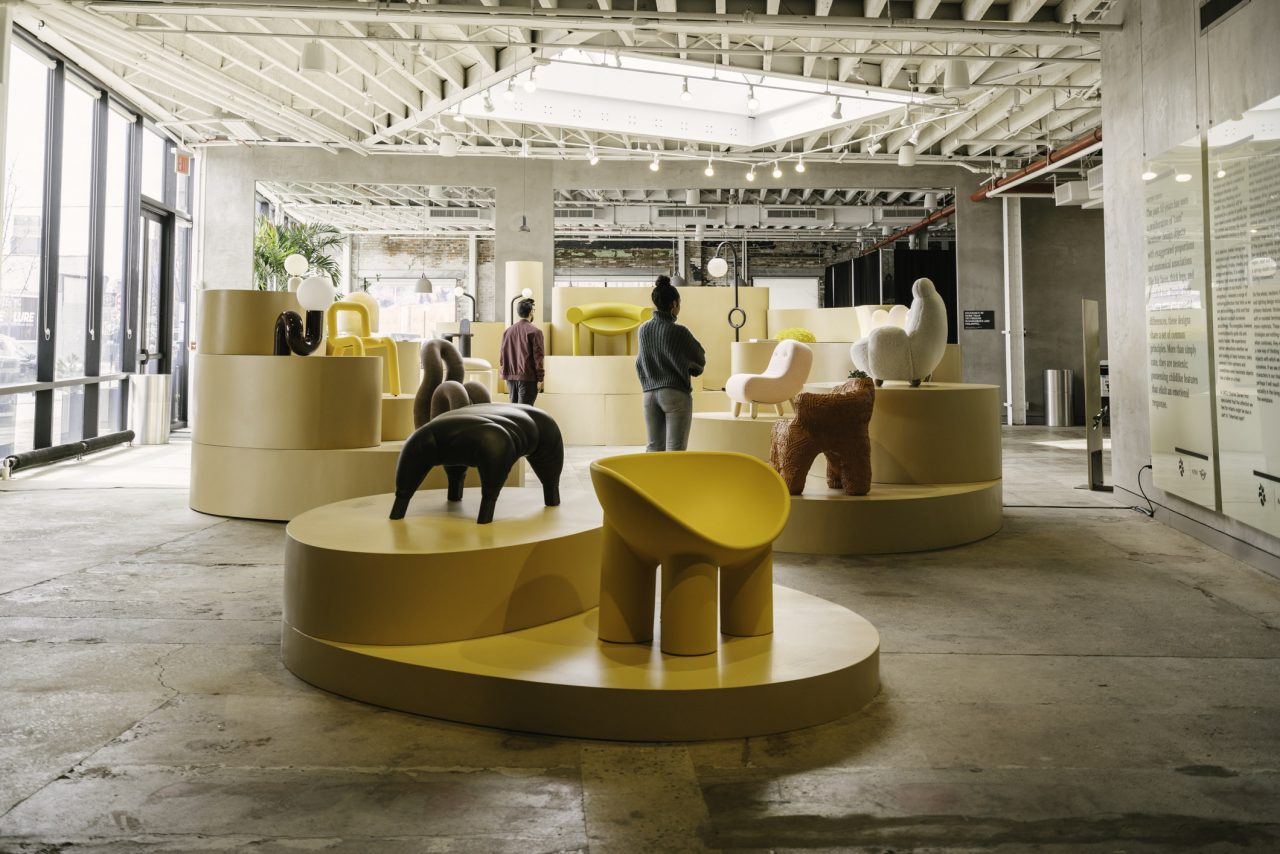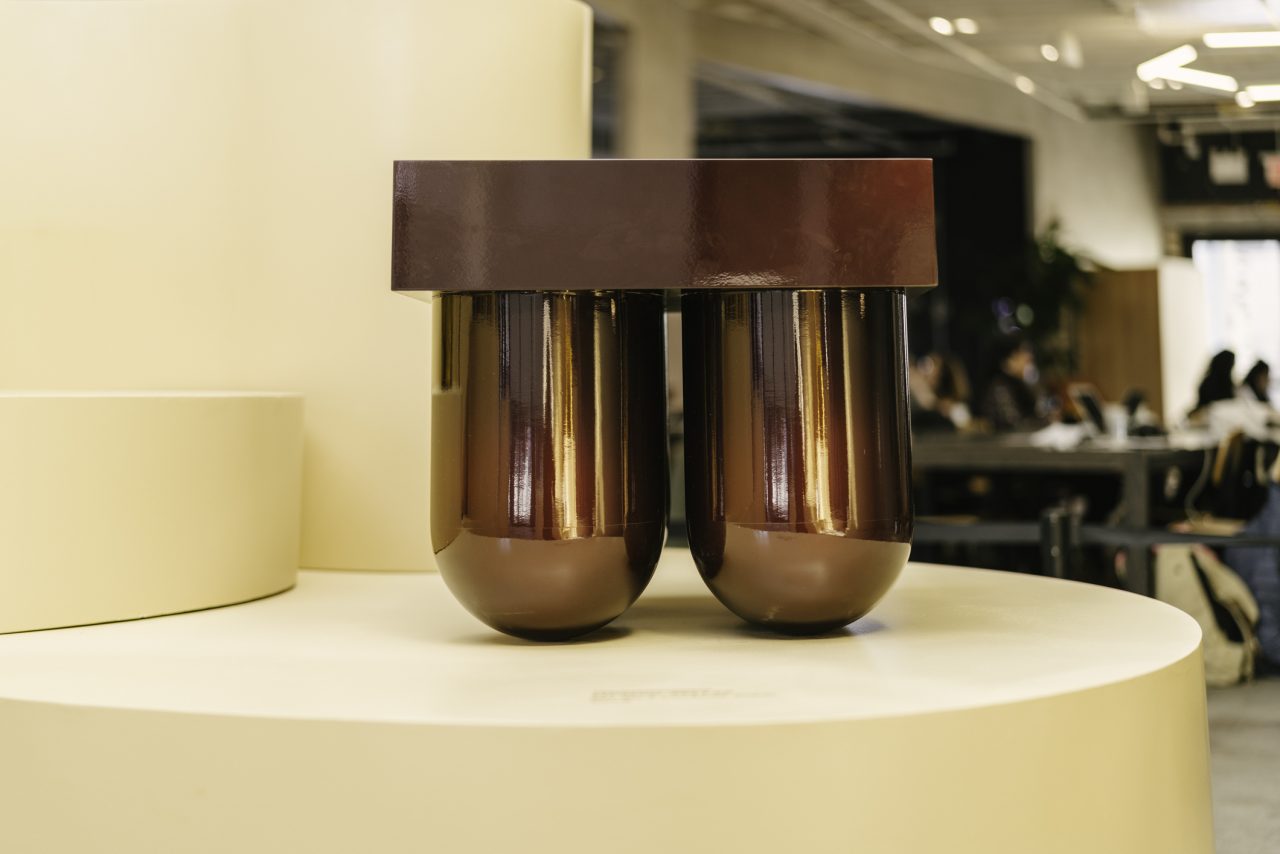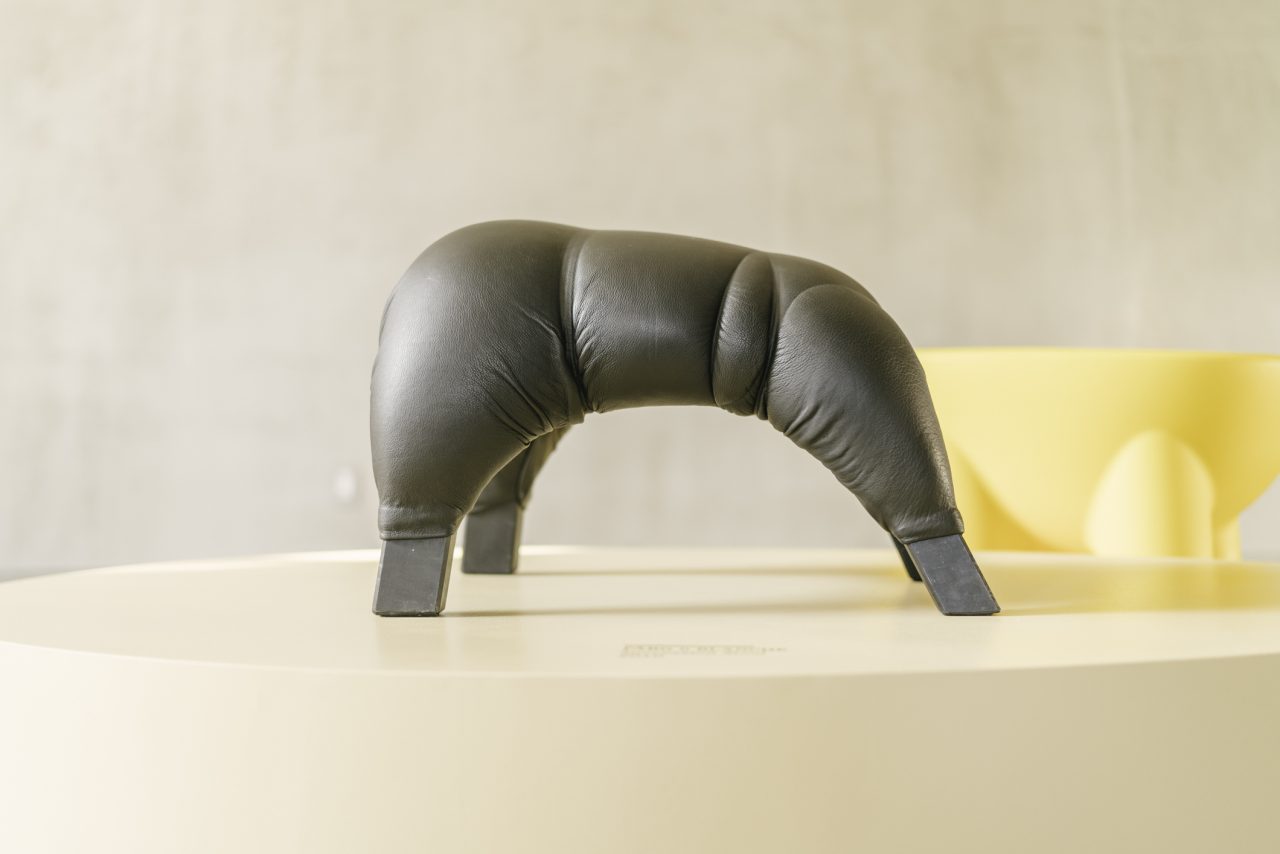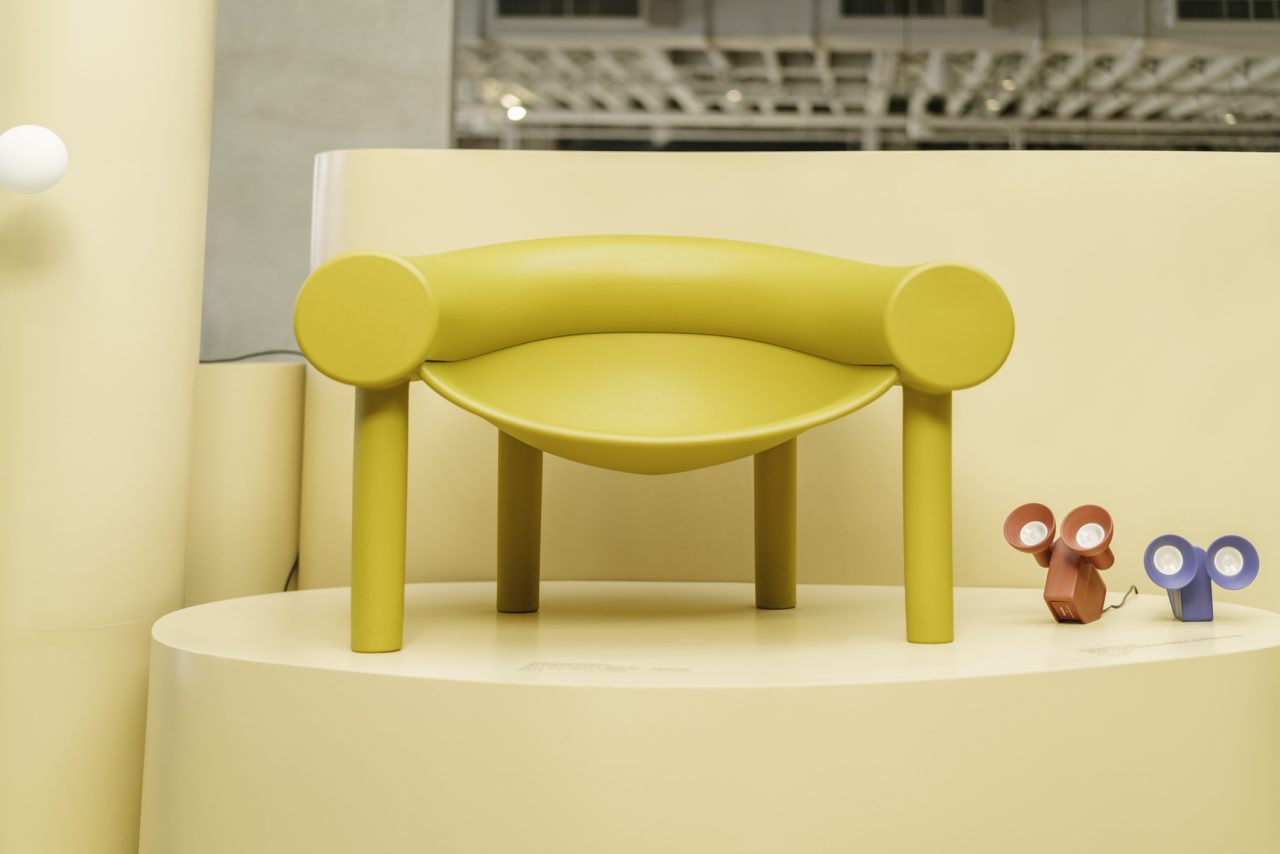While much of the furniture design industry spent the past ten years playing it safe with a restrained, minimalist approach, a new expressive style has emerged from within its margins. During this period, a vanguard of up-and-coming and established designers broke away from the norm and started reevaluating the fundamentals of form and function. They began playing around with proportion and anthropomorphic details. All of a sudden, a new slew of limited edition chairs and tables were sporting swollen legs, rounded feet, and even animalistic facial features.



On view at A/D/O in Greenpoint, Brooklyn, until March 28, Neotenic Design is a capsule group exhibition that surveys this trend. Curated by A/D/O members Justin Donnelly and Monling Lee of design studio JUMBO, the showcase identifies the movement as having close affinities with childlike physical features and the vivid emotional responses that association elicits. As humans, we are inherently drawn to objects with characteristics that resemble these human traits: big eyes, round heads, chubby cheeks, and pudgy extremities. Scientists have proven that our brains respond well to these features as it brings out our instinctual need to nurture and provide affection for less self-sufficient beings.



Exhibiting designers and brands—like Pierre Yovanovitch, Konstantin Grcic, Jaime Hayon, Faye Toogood, Sylvain Willenz, Chris Wolston, and Moroso, among others—have tapped into the potential of this emotive trend. There’s nuance in how this diverse group of European and American talents has employed neoteny—the retention of juvenile features—but on the whole, neotenic furniture and lighting design includes three primary traits: thickened forms; soft or rounded terminations; and the use of mono-materials. Ironically, this approach is not new and harkens back to ancient form making. What remains poignant, however, is how this recent trend asks us to reconsider the role of everyday objects; if they’re more childlike in characteristics, we might better find comfort in our domestic spaces.
